Draw Circle Shape in Css

Before we start. If you desire more complimentary content but in video format. Don't miss out on my Youtube aqueduct where I publish weekly videos on FrontEnd coding.
https://www.youtube.com/user/Weibenfalk
----------
Are yous new to web development and CSS? Have you ever wondered how those nice shapes are made that you encounter all over the internet? Wonder no more. You lot've come up to the right place.
Below I volition explain the very basics of creating shapes with CSS. There's a lot to tell you well-nigh this topic! Therefore I volition not embrace all (far from all) tools and shapes but this should give you a basic idea of how shapes are created with CSS.
Some shapes require more "fix and tricks" than others. Creating shapes with CSS is usually a combination of using width, height, top, right, left, border, bottom, transform and pseudo-elements similar :earlier and :after. We also have more modern CSS properties to create shapes with like shape-exterior and clip-path. I'll write well-nigh them below also.
CSS Shapes - The basic manner
By using a few tricks in CSS we've always been able to create basic shapes like squares, circles, and triangles with regular CSS properties. Let's look at a few of them now.
Squares and rectangles
Squares and rectangles are probably the easiest shapes to accomplish. By default, a div is always a square or a rectangle.
Y'all set the width and height equally shown in the below code. So it's simply a affair of giving the element a background colour. You tin have whatever other properties you want on the element.
#square { background: lightblue; width: 100px; height: 100px; } 
Circles
Information technology'southward almost as piece of cake to create a circumvolve. To create a circle we tin fix the border-radius on the chemical element. This will create curved corners on the element.
If we set it to 50% it will create a circle. If you lot fix a different width and peak we will get an oval instead.
#circle { background: lightblue; border-radius: 50%; width: 100px; height: 100px; } 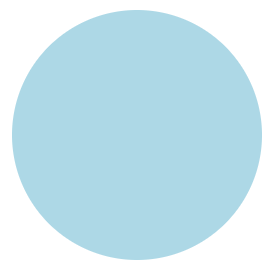
Triangles
Triangles are a fiddling trickier. Nosotros have to set the borders on the element to match a triangle. By setting the width and height to zero on the element, the actual width of the chemical element is going to be the width of the border.
Proceed in mind that the border edges on an element are 45 degree diagonals to each other. That'southward why this method works to create a triangle. By setting i of the borders to a solid color and the other borders to transparent it will have the form of a triangle.
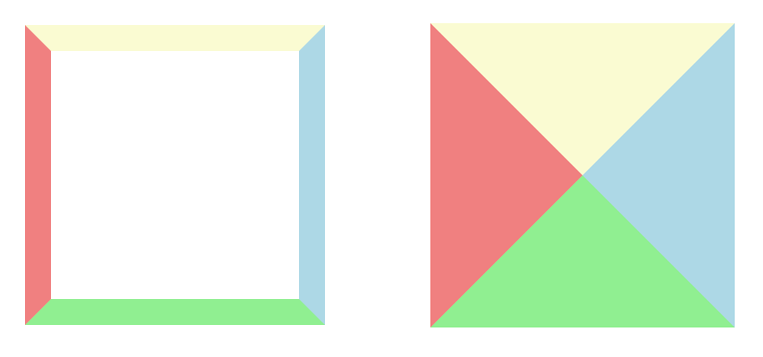
#triangle { width: 0; height: 0; border-left: 40px solid transparent; border-right: 40px solid transparent; border-bottom: 80px solid lightblue; } 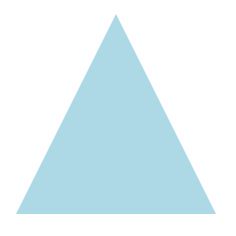
If you desire to have a triangle/arrow pointing in another direction Y'all tin change the border values corresponding to what side you want to exist visible. Or you tin can rotate the element with the transform property if you want to be actually fancy.
#triangle { width: 0; height: 0; border-top: 40px solid transparent; edge-right: 80px solid lightblue; border-lesser: 40px solid transparent; } 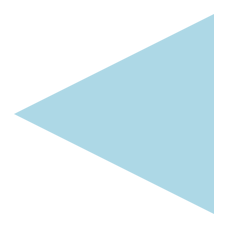
Alright – that's an intro to bones shapes with CSS. In that location are probably an endless corporeality of shapes you can think of to create. These are just the fundamentals, just with a picayune creativity and determination you tin can achieve a lot with just basic CSS properties.
In some cases, with more avant-garde shapes, it's also a practiced idea to utilize the :after and :before pseudo selectors. This is out of telescopic of this article though every bit my intention is to cover the basics to get you going.
Disadvantage
There is one big disadvantage with the above approach. For case, if you lot desire your text to flow effectually and wrap your shape. A regular HTML div with background and borders to brand upwards the shape won't allow that. The text will not adapt and flow effectually your shape. Instead it will period around the div itself (which is a square or a rectangle).
Below is an illustration showing the triangle and how the text volition period.
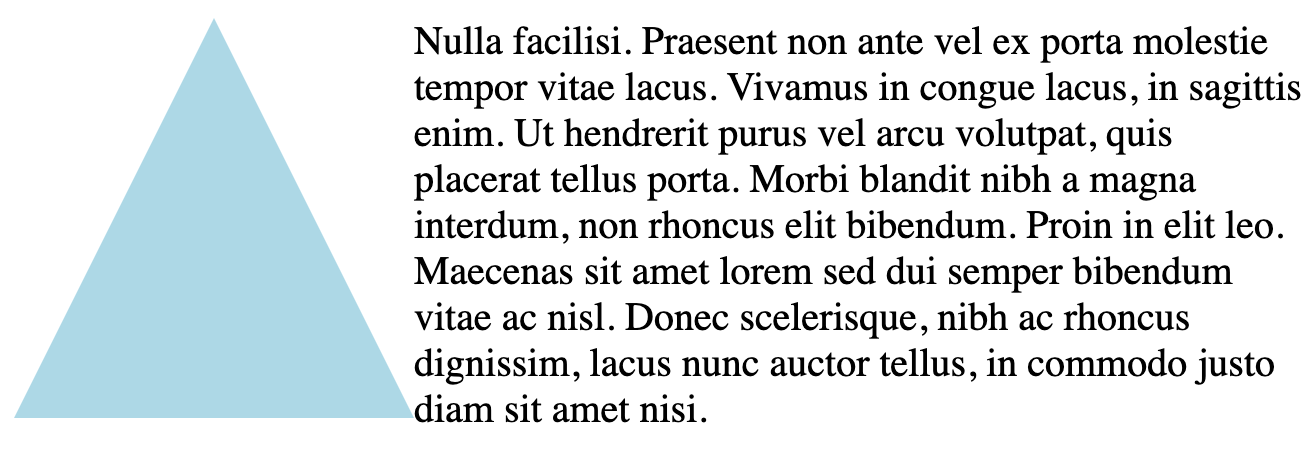
Luckily nosotros have some modernistic CSS properties to use instead.
CSS Shapes - The other style
Present we have a property called shape-outside to utilize in CSS. This property lets you define a shape that the text will wrap/menstruum around.
Along with this holding we take some basic shapes:
inset()
circle()
ellipse()
polygon()
Hither'south a tip: You can also use the clip-path property. You can create your shape with that in the aforementioned style, simply information technology won't let the text wrap around your shape like shape-outside does.
The element that we are going to apply the shape to with the shape-outside property to has to be floated. It also has to take a divers width and height. That's really important to know!
You can read more about why here. Below is too a text that I've taken from the provided link to developer.mozilla.org.
The shape-exterior property is specified using the values from the list below, which define the float expanse for float elements. The float area determines the shape effectually which inline content (float elements) wrap. inset()
The inset() blazon can be used to create a rectangle/foursquare with an optional offset for the wrapping text. Information technology allows you to provide values on how much yous want your wrapping text to overlap the shape.
You lot can specify the start to be the same for all four directions like this: inset(20px). Or it tin can be individually set for each direction: inset(20px 5px 30px 10px).
You can employ other units also to set the offset, for case, per centum. The values correspond like this: inset(pinnacle right bottom left) .
Check out the below lawmaking example. I've specified the inset values to be 20px at the top, 5px to the right, 30px at the lesser and 10px to the left. If you want your text to become around your square instead y'all tin can just skip using inset() at all. Instead fix the background on your div and specify the size as usual.
#square { float: left; width: 100px; height: 100px; shape-exterior: inset(20px 5px 30px 10px); background: lightblue; } 
It is besides possible to requite inset() a 2nd value that specifies the edge-radius of the inset. Similar below:
#square { float: left; width: 100px; superlative: 100px; shape-outside: inset(20px 5px 30px 10px round 50px); background: lightblue; } 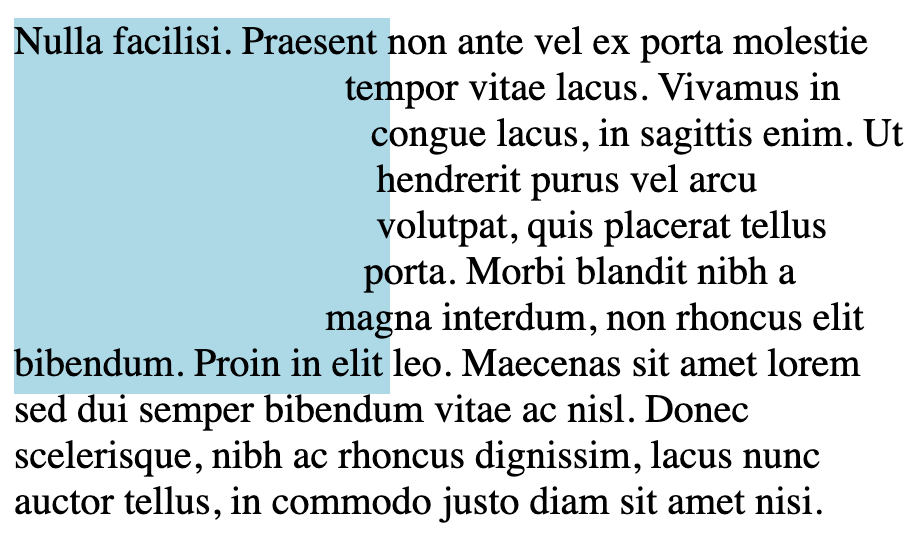
circle()
In this one a circle is created using the shape-outside property. Y'all also have to apply a clip-path with the respective property for the circle to show upwards.
The prune-path belongings can take the same value as the shape-exterior property and then we can give it the standard circle() shape that we used for shape-exterior. Besides, annotation that I've practical a 20px margin on the chemical element here to give the text some space.
#circle { float: left; width: 300px; top: 300px; margin: 20px; shape-outside: circle(); clip-path: circle(); background: lightblue; } 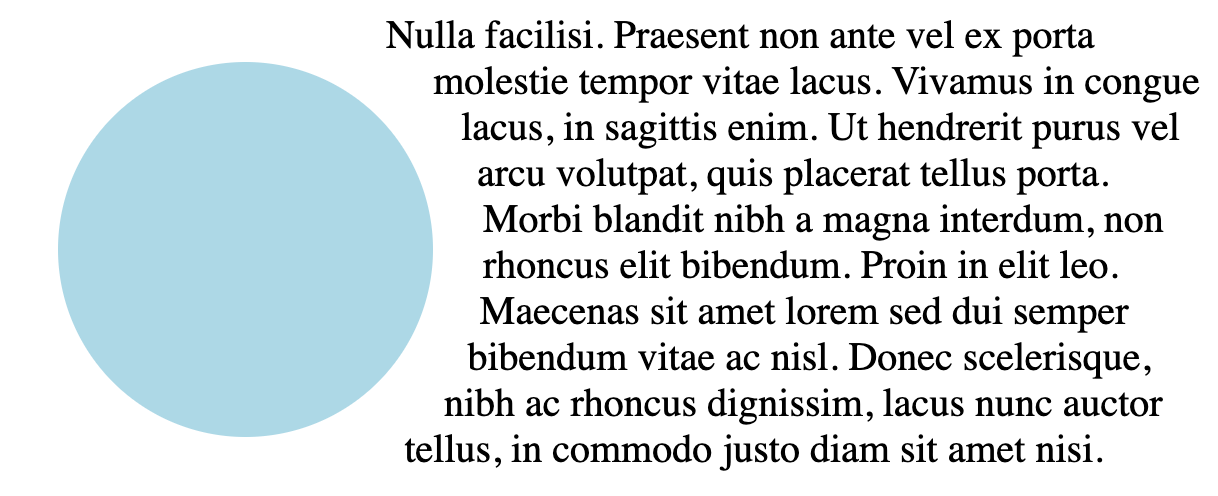
In the above instance, I don't specify the radius of the circle. This is because I desire it to be every bit big as the div is (300px). If you want to specify a dissimilar size for the circle you can practice that.
The circle() takes two values. The first value is the radius and the second value is the position. These values will specify the center of the circumvolve.
In the beneath example I've set the radius to 50%. So I accept shifted the middle of the circle by 30%. Note that the give-and-take "at" has to exist used between the radius and position values.
I've too specified another position value on the clip-path. This will clip the circle in half as I movement the position to nix.
#circumvolve { float: left; width: 150px; height: 150px; margin: 20px; shape-outside: circle(fifty% at thirty%); clip-path: circle(50% at 0%); background: lightblue; } 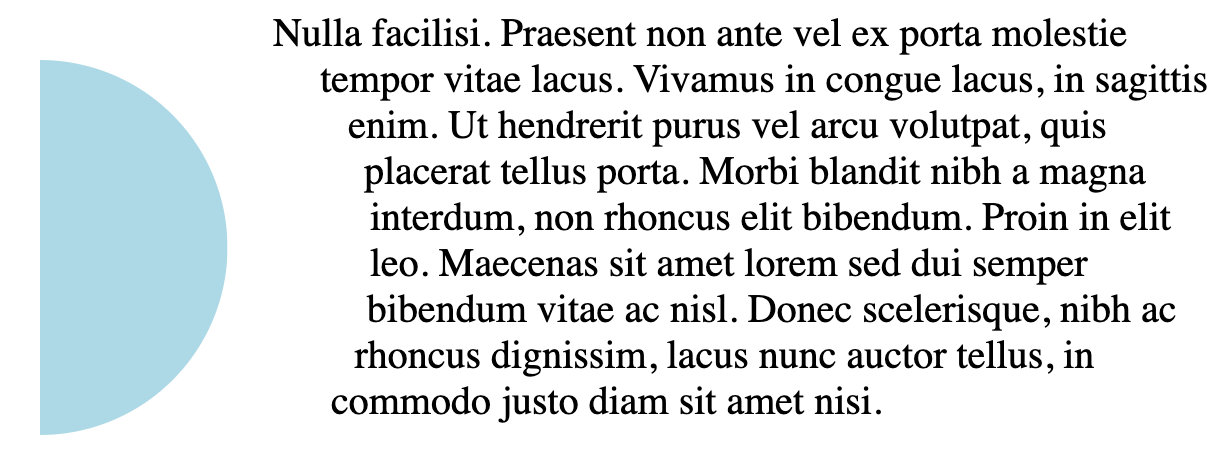
ellipse()
Ellipses work the same fashion every bit circles except that they create an oval. You tin can define both the X value and the Y value, like this: ellipse(25px 50px).
The same as a circle, information technology also takes a position value as the last value.
#ellipse { bladder: left; width: 150px; top: 150px; margin: 20px; shape-outside: ellipse(20% l%); clip-path: ellipse(20% 50%); background: lightblue; } 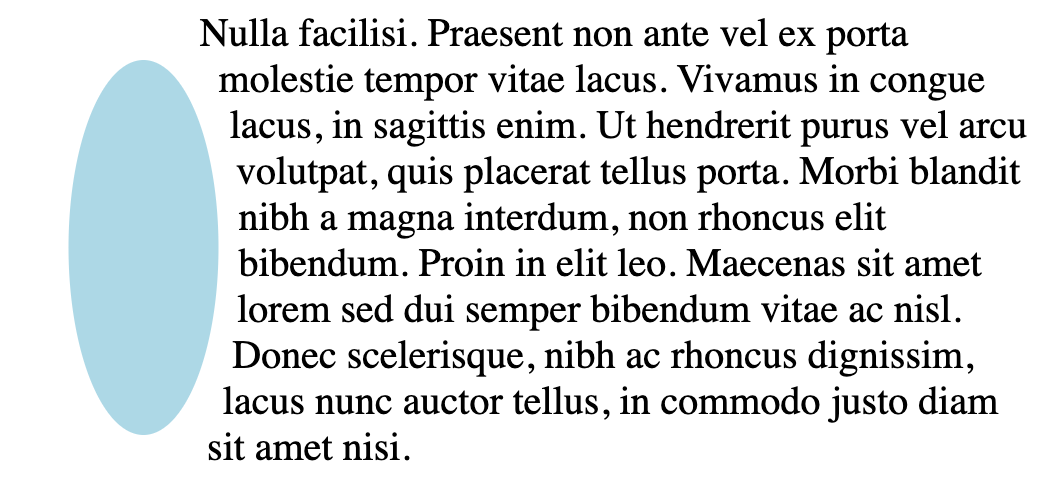
polygon()
A polygon is a shape with dissimilar vertices/coordinates defined. Below I create a "T" shape which is the first letter in my name. I start from the coordinates 0,0 and move from left to right to create the "T" shape.
#polygon { float: left; width: 150px; height: 150px; margin: 0 20px; shape-outside: polygon( 0 0, 100% 0, 100% 20%, 60% twenty%, 60% 100%, 40% 100%, 40% 20%, 0 20% ); prune-path: polygon( 0 0, 100% 0, 100% 20%, 60% twenty%, threescore% 100%, 40% 100%, twoscore% twenty%, 0 20% ); background: lightblue; } 
Images
You tin as well utilize images with transparent backgrounds to create your shape. Like this round beautiful moon below.
This is a .png image with a transparent groundwork.
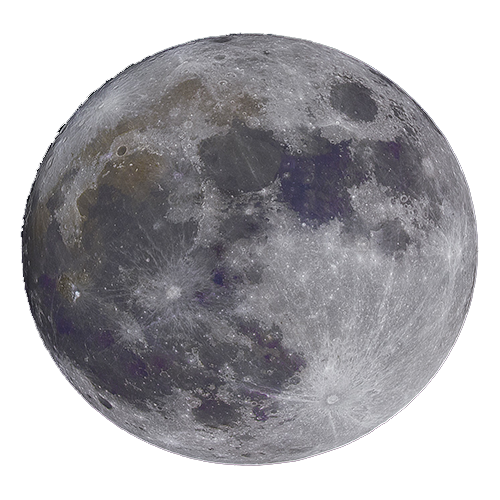
<img src="src/moon.png" id="moon" /> #moon { bladder: left; width: 150px; tiptop: 150px; shape-outside: url("./src/moon.png"); } 
And that's it! Thank y'all for reading.
Nigh the author of this article
My proper name is Thomas Weibenfalk and I'm a developer from Sweden. I regularly create gratuitous tutorials on my Youtube aqueduct. There's also a few premium courses out there on React and Gatsby. Feel gratis to visit me on these links:
Twitter — @weibenfalk,
Weibenfalk on Youtube,
Weibenfalk Courses Website.
Learn to code for free. freeCodeCamp'south open up source curriculum has helped more than 40,000 people get jobs every bit developers. Get started
Source: https://www.freecodecamp.org/news/css-shapes-explained-how-to-draw-a-circle-triangle-and-more-using-pure-css/
Kommentar veröffentlichen for "Draw Circle Shape in Css"